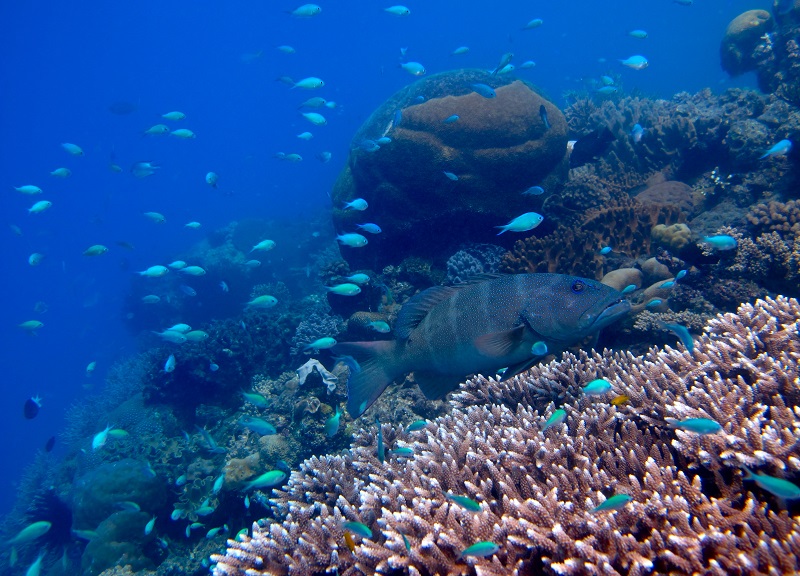An international team of researchers, including one from the Australian Institute of Marine Science, have quantified five critical ecological processes on more than 500 coral reefs worldwide to understand how these processes relate to each other.
Their work, published in Nature Ecology and Evolution, explored what distinguishes the most functional reefs and what that means for management of reef functioning.
Dr Diego Barneche, an ecological statistician at the Australian Institute of Marine Science and adjunct senior researcher with The University of Western Australia’s Oceans Institute, said the study demonstrates that five key functions performed by fish communities – the removal of algae, predation, biomass production, and the cycling of nitrogen and phosphorus – are inherently interconnected.
“So, while the performance of these processes is influenced by the community structure of reef fishes on any given reef, no reef can maximise each of the five processes simultaneously,” Dr Barneche said.
Coral reefs are often described as the rainforests of the ocean. However climate change and local threats, such as overfishing, have caused a stark decline in these worldwide, leaving scientists questioning whether future generations will still encounter healthy, ‘functional’ coral reefs. But what makes a reef functional?
Dr Nina Schiettekatte, postdoctoral fellow at UH Mānoa’s Hawai’i Institute of Marine Biology and lead author of the study, said we need to imagine a coral reef fish community swirling with small fishes that feed on algae.
“This community will be characterised by high algal consumption and high biomass production, but it will have low phosphorus cycling because these species excrete very little phosphorus,” she said.
Data was collected from individual fishes and combined with a large dataset on fish communities worldwide to gain detailed biological information on how they acquire and use energy and nutrients. Researchers found ecological processes on coral reefs worldwide are in a delicate balance, where it is impossible to maximise all processes.

Dr Barneche said the study quantifies multiple functions of coral reefs for the first time.
“We moved beyond simply using the biomass of a fish community, which has been a standard conservation metric, as a proxy for coral reef functioning, but rather looked at all of the different components,” Dr Barneche said.
“We also found that no single species was more important than others, but that half of all species were important in at least one location, meaning that there is no one fish species vital for ecosystem functioning but many local fish that are.”
The researchers concluded a more nuanced approach to conserving coral reefs is needed which considers local species, ecosystem dynamics, and stakeholder needs.
Feature image courtesy of UH Mānoa’s Hawai’i Institute of Marine Biology.








